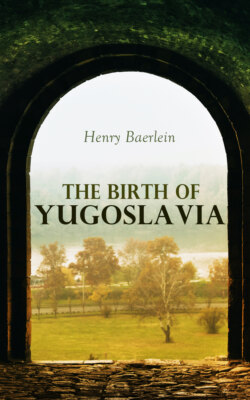Читать книгу The Birth of Yugoslavia - Henry Baerlein - Страница 18
THE FATE OF THE CROATS
ОглавлениеThe Croats were to be much more prominent in the Middle Ages. They did not, it is true, always manage to hold their heads above water; but they can now look back with more gratification than regret on the interminable conflicts which they had to sustain against the Hungarians on the one hand, the Venetians on the other. The Hungarian monarch, anxious to have an outlet on the Adriatic, attempted to cajole the Croats into electing him as their king, on the score of his being the brother of the wife of a late Croatian ruler. He secured by force what his pleadings had not gained him, and subsequently the link between Croatia and Hungary was more than once broken and reunited within the space of a few years; at last it was arranged that there was to be a purely personal union under the vigorous King Kolomon, and so it continued, with varying interference on the part of the Hungarians, until the dynasty of Arpad became extinct in 1301. The functionary who represented the central power in Croatia—there being for part of this period a similar official for Slavonia, the adjoining province—had the title of Ban. He was at the head of the Croatian army, he pronounced sentences in the name of the king and had other functions, so that the office came to be regarded with profound respect by the Croats, and many of its holders tried to deserve this sentiment. … Among the duties assumed by King Kolomon was that of recovering from the Venetians those coastal towns and islands which had fallen to them, owing to the chaos in Croatia. For more than two hundred years—that is, until the middle of the fourteenth century—this warfare between the Hungaro-Croatian kings and Venice raged without interruption; apparently the Dalmatian towns and islands were most unwilling to come under the sway of Venice. We read everywhere of how they themselves put up a strenuous resistance. At Zadar, the capital, where Pope Alexander III. had in the year 1177 been welcomed by the people with rejoicings and Croatian songs, a chain was drawn across the harbour in 1202, for the people hoped in this way to keep out the Venetians, who, with a number of Frenchmen, were starting out on the famous Fourth Crusade—that enterprise which ended, on the outward journey, underneath the walls of Constantinople. The Venetians forced their way into Zadar, plundered and devastated it; and in order to mollify the Pope, who was indignant at Crusaders having behaved in this fashion against a Christian town, they subscribed towards the building of the cathedral, but retained possession of the place—this time for over a hundred and fifty years. Yet the holding of Zadar did not imply that of other Dalmatian towns: during this period when Venice clung to the chief place there were a good many changes in the not-distant town of Šibenik, which was now under the Hungarians, now under Paul Subič, Prince of Bribir, now under the Ban Mladen ii., now an autonomous town under Venice.
